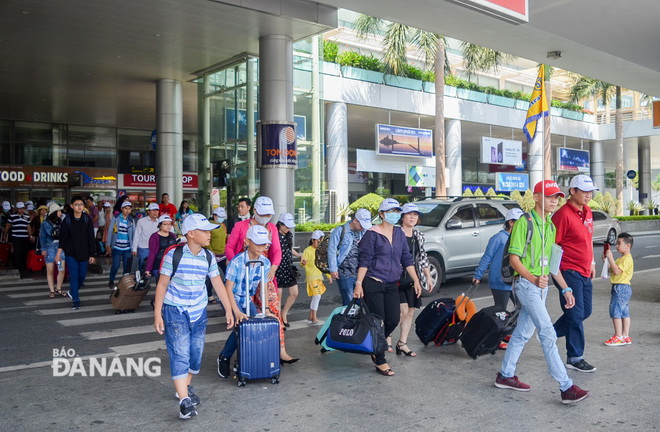Visitors pour into city during public holiday break
The Da Nang International Airport is likely to have served a total of 183 international flight arrivals over the 4-day holiday period between 28 April and 1 May for the National Reunification Day (30 April) and International Labour Day (1 May), 76 flights higher than the same period last year. Accordingly, the number of foreign air passengers are expected to have reached 27,450, up 77.7%.
 |
| A large number of visitors have booked tours to Da Nang through travel agencies |
In order to meet the increasing travel demand during the holiday period, the national flag carrier, Vietnam Airlines, has added an additional 300 flights, totalling 60,000 seats, on 12 domestic flight paths, to ease the travel strain during the ongoing 4-day vacation.
Betting on a growing volume of tourist arrivals to Da Nang over the holiday period, budget airline VietJetAir also added 200 flights to serve tourists between 25 April and 5 May.
In a similar vein, Jetstar Pacific has already opened the direct flight connecting Da Nang and Japan’s Osaka City, offering a new opportunity for the 2 localities to appeal for more businesses and visitors to each other.
 |
| The number of foreign tourists is expected to have increased sharply over the holiday break |
According to the municipal Department of Tourism, the number of visitors from both home and abroad is likely to have increased by 10.2% to hit 342,992 in total over the holiday period.
Of this figure, the number of foreigners is expected to rise by 28.8% to hit 108,930, whilst that of domestic visitors is likely to go up by 3.2% to 234,062.
The majority of domestic tourists come from localities in the North and North Central regions, including the cities of Ha Noi and Hai Phong, and the provinces of Nghe An and Ha Tinh, whilst foreigners are mainly from such Northeast Asian countries as South Korea, China and Japan.
Ms Lim Ji Hue, a tourist from Busan City in South Korea, said, "My family booked flights and hotel rooms in February in case of possible shortage of accommodations during the peak tourist season”.